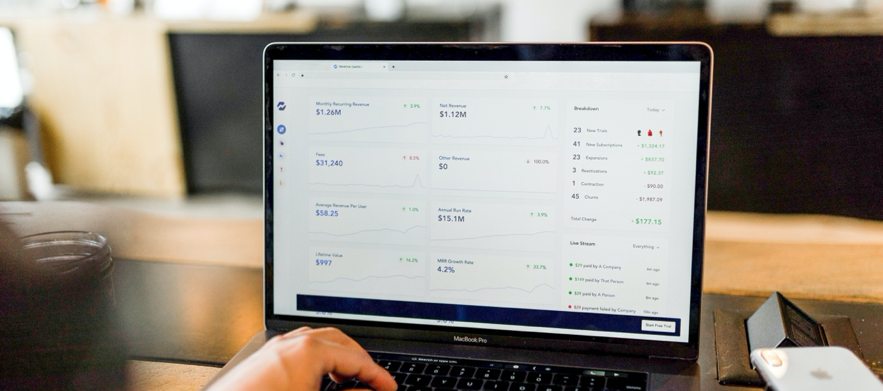In uncertain times such as the one we all are currently enduring, we often hear about debt recovery and debt collection.
02 Dec 2020
In uncertain times such as the one we all are currently enduring, we often hear about debt recovery and debt collection. These similar terms both refer to the attempt to retrieve a loan or credit, but they hold one key distinction: who is trying to recover the debt?
In debt collection processes, organisations or individuals that have acted as creditors search for debt repayment themselves. When this fails, a third party takes over to recover the uncollected debt, a process known as debt recovery.
In uncertain times such as the one we all are currently enduring, we often hear about debt recovery and debt collection. These similar terms both refer to the attempt to retrieve a loan or credit, but they hold one key distinction: who is trying to recover the debt?

What is debt collection and what have we done?
The top priority is making sure that debt is collected and always recovered. In these processes, lenders will face challenges such as the implementation of a viable and sustainable solution.
Surprisingly, it is not uncommon to find that organisations lack process automation and efficiency to correctly manage the customer’s journey, as well as an appropriate communication scheme with the customer. Also, we often see that B2B and B2C channels are merged into a unified process when they should be two very different dynamics regarding debt collection procedures.
Another challenge which must be considered is the customer experience. Lenders need to understand how stressful it can get when their clients have taken out a loan or credit facility and are struggling to pay it back. Banks must reflect this understanding in the way they communicate and deal with their client, that is, trying to recover the debt but not putting excessive pressure on the other party. Organisations need to be cognizant regarding debt collection and recovery legislation, as well as ensuring that they maintain a viable reputation in the marketplace.

Maintaining customer satisfaction whilst still trying to collect debt is undoubtedly tricky. Lenders must ensure that once they recover the debt, that they retain the individual or business as a customer once their situation has improved.
Lenders also must keep in mind that recovering debt requires time and is costly, and the increased staff or workload can be a strain for the lender too.
Some challenges lending organisations tend to have:
1. Manual processes / forms
That are very complicated. Items to consider: How long does it take for a lender to get back to the client? Is our process efficient and effective? Another consideration is how digitally literate a client is, making it necessary to satisfy needs through different channels, meeting the needs of both individuals and businesses.
2. Lack of visibility of the loan process
Or progress regarding the recovery of that debt. It is imperative to be able to communicate to the customer where they are in terms of the debt collection and what options are available, making sure the communication channel is open, and there is a proactive approach.
From a debt collection standpoint
As we mentioned at the start, sometimes the lender will involve a third party, also known as a debt recovery agency. Hiring agencies are typically used when organisations aim to collect or recover the debt but still maintain the relationship with the client. This way, they separate themselves from the issue by bringing in assistance to resolve the collection.
The top priority is always debt collection, but companies must be sensitive in their approach.
An important thing to take into consideration
When dealing with debt recovery, there are mandatory stages to complete, for example, a letter before any action is taken. Before any procedures can move forward, a note must be sent from the lender to the debtor.
Typically, a lender that has lent money will first request the repayment. Usually, a customer will repay accrued interest as well as a portion of the capital that they borrowed. Once the lender sends the payment request, if there is no feedback and the client does not make a payment, the lender will pursue the client. If all else fails, debt recovery is the last resort, where a third-party organisation will handle the recovery of the debt.

What can you gain by addressing these challenges?
These are just some advantages a lender can benefit from if they have an application in place for debt collection purposes:
- Being able to manage the debt collection within their processes
- Not only addressing the clients’ requirements but also addressing the internal processes and governance requirements
- Increasing customer loyalty: if you are understanding and you are empathetic towards an business or an individual regarding the repayment debt, it is more likely that the individual or company remain a client.
- Working with an automated solution that can potentially merge into an existing loan application and other solutions already in place.
- The solution will address the business-as-usual debt process – it’s not only necessary when a client has had difficulties in repaying the debt, this is a debt collection / repayment process that will complement and extend the existing loan process.
What is the solution for debt collection and debt recovery
Simply put, it is the journey the client needs to go through to repay the debt, where the lender may be willing to include a loan repayment holiday, or a credit extension, or in the worst case scenario, where the lender needs to instigate a process to recover the debt.
The VASS perspective
From our perspective, this is a solution that can be implemented very rapidly without compromising the client’s credit status, where possible, but by the same token, addressing the lenders requirements in the most automated, efficient way possible while maintaining the integrity of the lender.
The solution we propose at VASS is multi-channel, which allows the communications platform to support the lender, who can monitor and effectively follow up on the debt recovery or collection while maintaining the business usual loan processes.
VASS Solution Benefits
The Solution We Propose
- The solution is a single platform which managers all the possible communication channels that a client may prefer: email, text, WhatsApp, telephone call or Mobile App, for example.
- A lender needs to have a holistic solution to address all the channels that an organisation or individual may need to engage. Lenders must be able to collate and save the information received through all channels to recover the bad debt as quickly as possible.
The Client Journey
- To take proactive action, you will be able to automate the activities and tasks of the agent, allowing manual intervention where the discretion of an advisor is allowed. It is important that the process is auditable, including every customer interaction, as well as the recording of calls where necessary.
- The journey must be convenient and easy to use for the client, facilitating different options to paying off the loan.
From an internal perspective
The ultimate goal is to have a single consolidated platform where an internal approval process is easy to review and allows you to obtain a 360˚ view of your client, in the event that your client has more than one product or service.
A VASS solution
Dealing with debt collection can be time-consuming and labour-intensive. It is crucial to have a solution to create a case, communicate to the customer through various channels such as email, marketing channels or otherwise through a call center where an agent can engage with the client. Having a single platform that monitors all forms of communications with the customer is what makes the difference: Utilising the available omnichannel methods will provide communication transcripts which are essential to ensure quicker bad debt resolution.
VASS’ solution allows you to go through the case allocation, then through the communication with the customer and the client regarding a particular case. To you, this means you have precise control over specific engagements and can escalate the issue.
For those customers where a loan repayment window or credit extension is required, VASS’ solution offers an immediate financial solution to meet customer needs without compromising the future of their Credit Status, which the lender can communicate through a multi-channel communications platform. Customers who are no longer making attempts to pay back debt go into Debt Recovery.
The VASS Customer Journey will automate the agent’s task of identifying a breach in SLAs, so corrective action can be taken. Depending on the customer’s preference, the communication will provide a moratorium request through a responsive, user-friendly landing page. Agents will handle all Collections on one consolidated platform where the internal approval process is made easier by having a 360º view of the customer. As the Case proceeds, automated assignments are escalated to the relevant team members, address complaints and split tasks where required, all within one platform.
In conclusion, the process of debt collection and / or recovery is a strain on both the lender and the entity borrowing the funds. However, the process can be made easier by having a solution in place which streamlines the process while accommodating the requirements of the lender and the needs of the borrower. The VASS solution does both while ensuring that any regulatory requirements are addressed.
Julian Martingano
Sales Director


 Facebook
Facebook
 X
X
 Linkedin
Linkedin